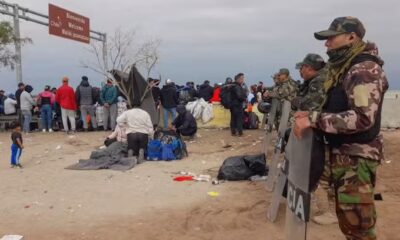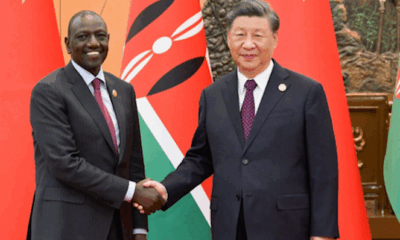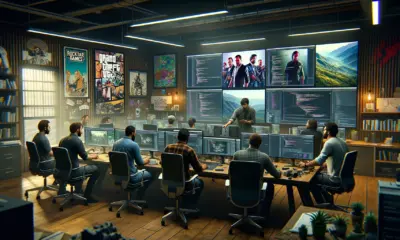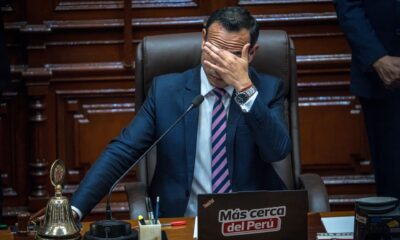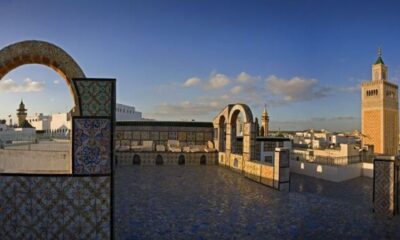Politics
Gen Z Protests Surge in Morocco Amid Calls for Change
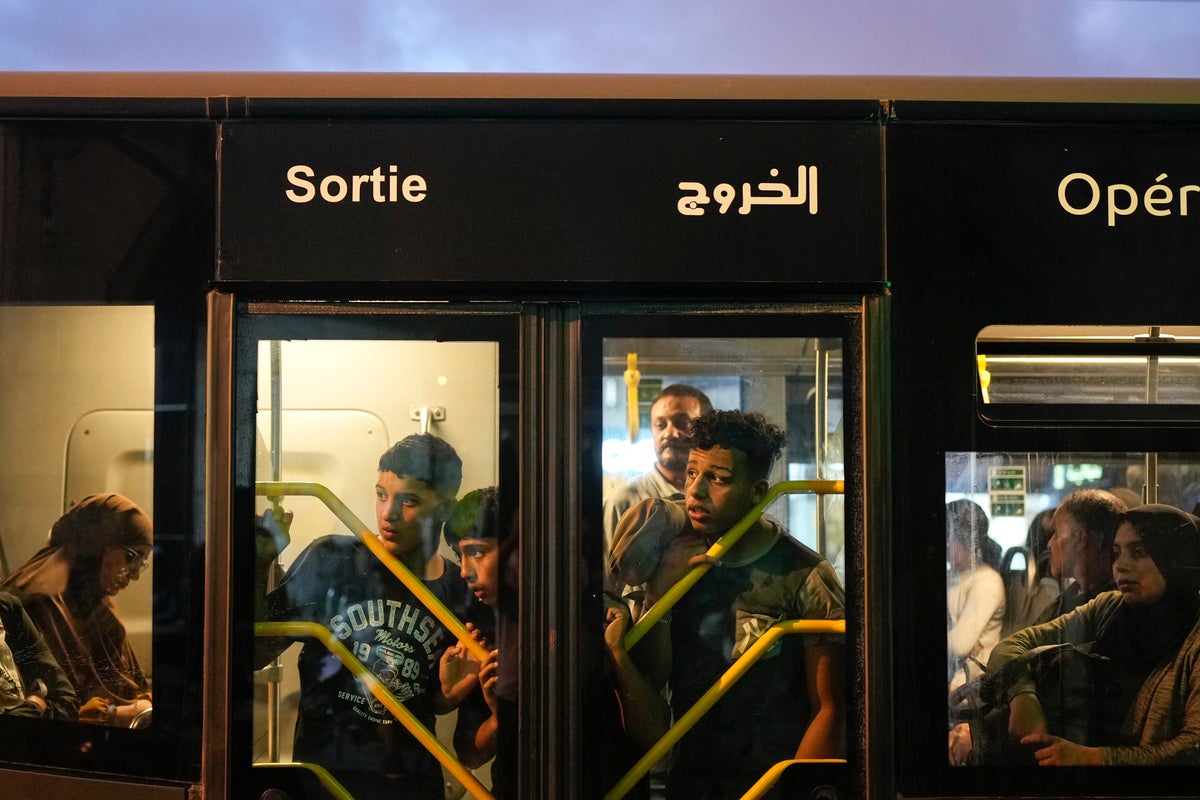
Demonstrations have erupted across more than a dozen cities in Morocco, driven by a wave of protests led by young people, particularly those in the Gen Z demographic. Over the past week, these protests have underscored a growing discontent with corruption, lack of opportunity, and the perceived disconnect between government spending priorities and the needs of the population.
The North African nation joins a series of countries experiencing similar movements, including Madagascar, Kenya, Peru, and Nepal. In Morocco, protesters are reacting to stark contrasts between the government’s investments in infrastructure for the upcoming 2030 FIFA World Cup and the inadequacies of the healthcare system.
Meet the Protesters
At the heart of the demonstrations is a leaderless group called Gen Z 212, named after Morocco’s dialing code. This collective organizes through digital platforms like Discord, engaging around 180,000 members. Their grassroots efforts have led to various spin-off groups that manage local protests independently.
Morocco is experiencing a significant youth bulge, with over half of its population under 35 years old. Yet, as the country invests billions into infrastructure and tourism, youth unemployment has soared to 36% among those aged 15-24. A recent survey by Afrobarometer found that more than half of Moroccans in this age group have considered emigrating due to limited opportunities.
During midweek protests, violence broke out, with officials claiming that most participants were minors. Human rights organizations reported that many of those arrested were under 18, highlighting the vulnerability and desperation of the youth involved.
Issues at the Forefront
Although Morocco is Africa’s most visited country, attracting tourists with its rich history and landscapes, the daily lives of its 37 million citizens often tell a different story. Many face rising living costs and stagnant wages. Critics argue that while Morocco has made strides in improving living standards, this progress has been uneven and has exacerbated existing inequities.
The government has announced plans to spend nearly $16 billion on World Cup-related infrastructure, including the construction of seven new stadiums. However, many citizens contend that these investments come at the expense of essential services. The monthly minimum wage stands at approximately $300, while areas lacking basic infrastructure continue to struggle.
Morocco’s public health system, which provides over 80% of care, is underfunded and lacks adequate staffing, particularly in rural regions. With only 7.7 medical professionals per 10,000 inhabitants, the healthcare system is stretched thin, and many hospitals are unable to provide necessary care.
The protests have also been fueled by specific incidents, such as the deaths of eight women during childbirth in a public hospital in Agadir. This city, known for its tourism, is located in one of Morocco’s poorest provinces, Sousse-Massa, where residents have long complained about inadequate medical facilities.
Protesters have directed their anger towards key figures, including Prime Minister Aziz Akhannouch and Health Minister Amine Tahraoui, accusing the government of corruption and negligence. Akhannouch, one of the wealthiest individuals in Morocco, has faced scrutiny for his business interests and controversial government contracts related to infrastructure projects.
Demands and Government Response
In response to calls for clarity on their demands, Gen Z 212 published a letter to King Mohammed VI, requesting the dismissal of the current government and the release of political detainees. They seek a forum to hold officials accountable, reflecting a broader desire for meaningful change in governance and public services.
The protesters’ slogans, such as “Stadiums are here, but where are the hospitals?” resonate with the frustration towards government spending that prioritizes high-profile projects over essential services. “Freedom, dignity, and social justice” echoes previous movements, encapsulating the demand for more equitable treatment.
In light of escalating tensions, government responses have varied. Security forces have alternated between crackdowns and more lenient approaches. Notably, during protests on September 27 and 28, riot police arrested many demonstrators, and there were reports of police violence, including the death of three individuals during a confrontation outside Agadir.
While some government officials have expressed a willingness to engage in dialogue, many citizens feel that promises for improvements ring hollow, especially as they witness rapid construction of stadiums without corresponding enhancements to healthcare or social services.
Health Minister Tahraoui announced plans to bolster existing hospitals and open new facilities, suggesting that the government is attempting to reassure the public amid widespread discontent. Yet, many demonstrators remain sceptical about the sincerity and effectiveness of these initiatives, as they continue to call for systemic reform and immediate action to address pressing social issues.
The protests in Morocco illustrate a significant moment of youth activism in the country, reflecting broader global trends where young people are increasingly making their voices heard in the face of political and economic challenges.
-

 World1 day ago
World1 day agoCoronation Street’s Shocking Murder Twist Reveals Family Secrets
-

 Entertainment4 months ago
Entertainment4 months agoKate Garraway Sells £2 Million Home Amid Financial Struggles
-

 Entertainment3 months ago
Entertainment3 months agoAnn Ming Reflects on ITV’s ‘I Fought the Law’ Drama
-

 Health3 months ago
Health3 months agoKatie Price Faces New Health Concerns After Cancer Symptoms Resurface
-

 Entertainment3 weeks ago
Entertainment3 weeks agoCoronation Street Fans React as Todd Faces Heartbreaking Choice
-

 World3 weeks ago
World3 weeks agoBailey Announces Heartbreaking Split from Rebecca After Reunion
-

 World5 days ago
World5 days agoKevin Sinfield Exceeds Fundraising Goal Ahead of Final Marathons
-

 Entertainment3 months ago
Entertainment3 months agoCoronation Street’s Carl Webster Faces Trouble with New Affairs
-

 Entertainment4 days ago
Entertainment4 days agoTwo Stars Evicted from I’m A Celebrity Just Days Before Finale
-

 Entertainment3 months ago
Entertainment3 months agoWhere is Tinder Swindler Simon Leviev? Latest Updates Revealed
-

 Entertainment4 months ago
Entertainment4 months agoMarkiplier Addresses AI Controversy During Livestream Response
-

 Science2 months ago
Science2 months agoBrian Cox Addresses Claims of Alien Probe in 3I/ATLAS Discovery

